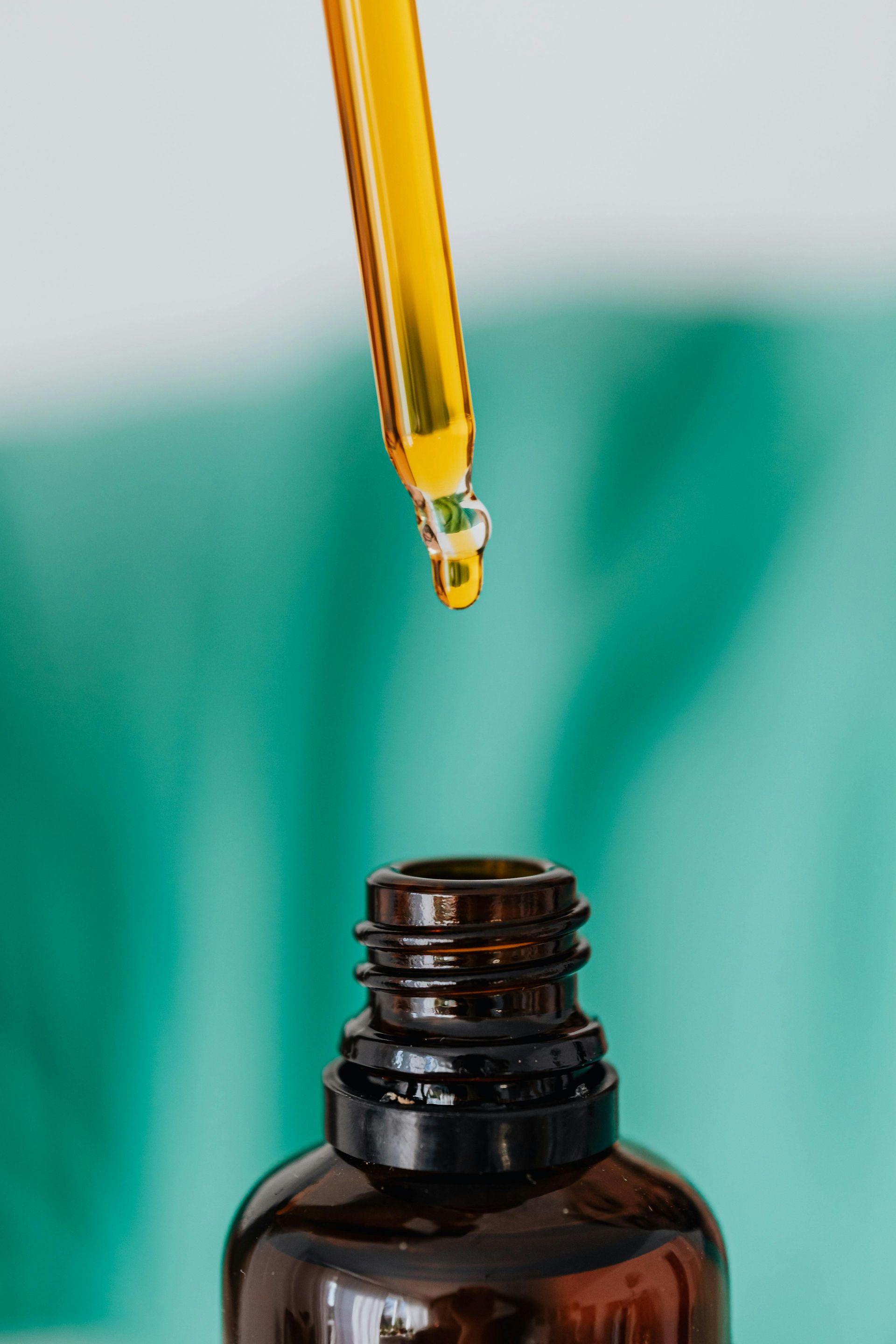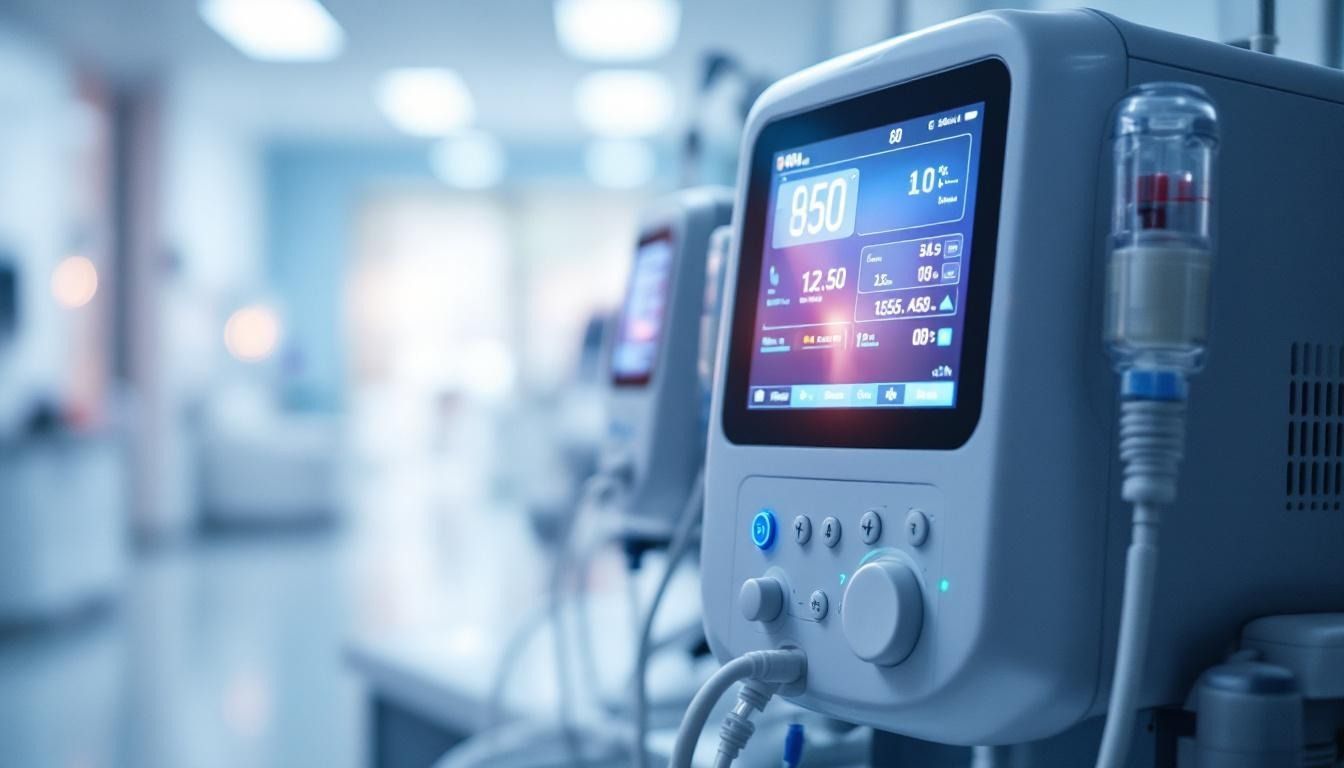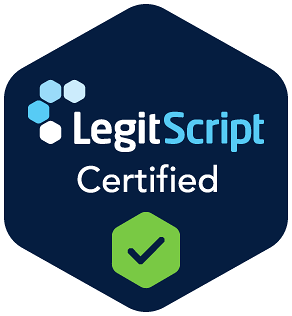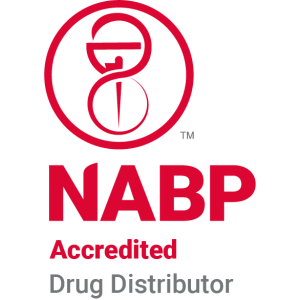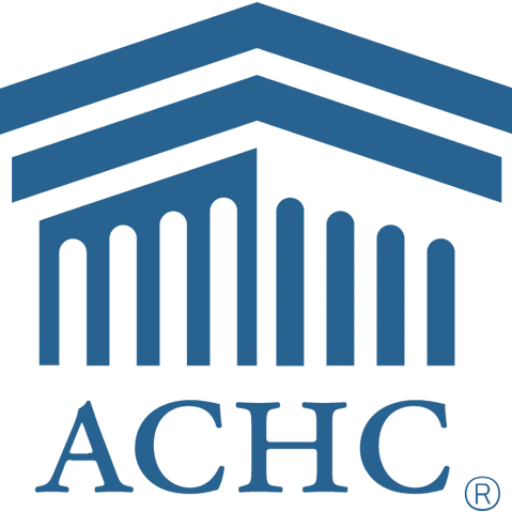Parenteral nutrition therapy options
Introduction to Parenteral Nutrition
Parenteral nutrition is a life-saving method for patients unable to meet their nutritional needs through oral or enteral intake. This intravenous feeding technique is essential for conditions that impede the digestive system's ability to absorb nutrients effectively. From definitions to procedures and potential risks, this article provides a comprehensive overview of parenteral nutrition therapy options available in modern clinical practice.
Understanding Parenteral Nutrition

What does parenteral nutrition entail?
Parenteral nutrition (PN) is a vital method of delivering essential nutrients directly into the bloodstream through intravenous (IV) administration. It is utilized primarily when the gastrointestinal tract cannot adequately absorb nutrients from food. PN is categorized into two main types:
- Total Parenteral Nutrition (TPN) : Provides complete and balanced nutrition, used when patients cannot digest food at all.
- Peripheral Parenteral Nutrition (PPN) : Offers partial nutritional support via smaller veins, typically as a short-term solution.
Components included in parenteral nutrition
The formulation of parenteral nutrition includes several critical components tailored to meet individual patient needs:
- Carbohydrates : Often supplied as dextrose for energy.
- Proteins : Administered as amino acids to support tissue repair and immune function.
- Fats : Delivered through lipid emulsions for essential fatty acids.
- Vitamins and minerals : To ensure overall health and metabolic function.
- Electrolytes and water : Crucial for hydration and maintaining biochemical balance.
Indications for parenteral nutrition use
Parenteral nutrition is indicated in various medical conditions such as:
- Intestinal failure or severe malabsorption due to diseases like Crohn's or short bowel syndrome.
- Gastrointestinal surgeries that inhibit nutrient absorption.
- Cancer treatments where oral intake is not suitable for patients.
The application of PN is life-saving for many, although it carries potential risks, including infections and metabolic issues, emphasizing the need for careful monitoring and intervention by healthcare professionals.
Types of Parenteral Nutrition: TPN and PPN

What are Total Parenteral Nutrition (TPN) and Peripheral Parenteral Nutrition (PPN)?
Total Parenteral Nutrition (TPN) and Peripheral Parenteral Nutrition (PPN) are vital intravenous methods for delivering nutrients when oral intake is infeasible.
-
Total Parenteral Nutrition (TPN) provides complete nutritional support through a central IV catheter, allowing higher caloric concentrations necessary for patients unable to utilize their digestive systems. It is typically indicated for long-term use, often in individuals battling severe malnutrition or gastrointestinal diseases where oral feeding is not an option.
-
Peripheral Parenteral Nutrition (PPN) , on the other hand, delivers partial nutritional support via a peripheral IV catheter. This method is suitable for short-term use, generally not exceeding two weeks, and is ideal for patients who still have some capacity to eat but require supplemental nutrition to address malnutrition.
The formulations available for TPN are usually more concentrated and designed to meet comprehensive nutritional needs, whereas PPN solutions are more diluted with fewer calories.
Clinical applications for each type
The choice between TPN and PPN primarily depends on the clinical situation:
| Type of Nutrition | Clinical Applications | Duration of Use |
|---|---|---|
| TPN | Severe gastrointestinal dysfunction, bowel obstruction, cystic fibrosis, and in severe malnutrition cases where oral nutrition is impossible. | Long-term (weeks/months) |
| PPN | Short-term support, such as after surgical procedures when the digestive system is still usable but requires enhancement. | Short-term (up to 2 weeks) |
Both methods are effective in preventing muscle wasting and catabolism in critically ill patients, tailored to meet specific nutritional requirements based on their health conditions.
Complications and Risks of Total Parenteral Nutrition

What complications can arise from Total Parenteral Nutrition?
Total Parenteral Nutrition (TPN) can lead to various complications that significantly impact patient health. The most common issues include:
- Infections : Risk of catheter-related bloodstream infections.
- Liver Dysfunction : Potential hepatic complications such as fatty liver and cholestasis over prolonged use.
- Metabolic Imbalances : Issues like hyperglycemia (high blood sugar) and hypoglycemia (low blood sugar).
- Thrombosis : Formation of blood clots due to IV access.
- Refeeding Syndrome : Occurs particularly in severely malnourished patients, leading to dangerous electrolyte shifts.
- Dehydration : Imbalances in fluid intake can occur if not monitored closely.
- Bone Disease : Long-term TPN may contribute to metabolic bone diseases due to nutrient deficiencies.
How can TPN complications be managed?
Management of complications involves a proactive and multidisciplinary approach:
- Regular Monitoring : Frequent checks of blood glucose levels, electrolytes, and liver function tests to catch imbalances early.
- Close Supervision : Ensuring that patients have a healthcare team overseeing the administration of TPN, including dietitians, pharmacists, and nurses.
- Customized Formulations : Adjusting nutrient composition based on laboratory results to better meet patient needs.
- Infection Control : Implementing strict aseptic techniques during catheter insertion and maintenance to minimize infection risks.
- Fluid Regulation : Carefully managing fluid intake and monitoring hydration status to prevent dehydration or overload.
By following these strategies, healthcare providers can limit the risks associated with TPN and enhance patient safety.
Common Solutions in Parenteral Therapy
What are common solutions used in parenteral therapy?
Common solutions used in parenteral therapy are crucial for patients unable to gain nutrition through the gastrointestinal (GI) tract. These formulations are specifically designed to provide essential nutrients intravenously, ensuring proper dietary intake under challenging medical circumstances.
Key solutions include:
- Total Parenteral Nutrition (TPN) - This solution is comprehensive, providing complete nutrition for patients requiring sustained nutritional support. It is administered through a central line, accommodating hyperosmolarity, due to its concentrated nutrient profile.
- Peripheral Parenteral Nutrition (PPN) - Typically used for short-term therapy, PPN offers a less concentrated nutrient solution that is administered through smaller peripheral veins.
- All-in-one solutions - These innovative three-chamber bags come pre-mixed, offering an easy-to-use option that reduces preparation time while ensuring essential nutrients are provided effectively.
Components tailored to patient needs
The nutritional components of parenteral solutions are meticulously tailored based on individual requirements of the patients. Core ingredients include:
- Dextrose - A primary source of carbohydrates for energy.
- Amino Acids - Essential proteins necessary for bodily functions and repairs.
- Lipids - Provide necessary fats for energy and cellular health.
- Electrolytes, vitamins, and trace elements - Important for overall metabolic processes and bodily functions.
Through continuous monitoring and personalized adjustments, healthcare providers ensure that patients receive optimal nutrition tailored to their specific health needs, making parenteral therapy vital for those with impaired digestive functions.
Alternative Approaches to Parenteral Nutrition
Is there an alternative to Total Parenteral Nutrition (TPN)?
Yes, there are several alternatives to Total Parenteral Nutrition (TPN). One prominent option is Peripheral Parenteral Nutrition (PPN), which is suitable for patients needing short-term nutritional support lasting less than two weeks. This approach provides partial nutrition via smaller veins when complete nutritional support isn't necessary.
Another alternative is enteral nutrition (EN), recommended for patients with a functional gastrointestinal (GI) tract. This method delivers essential nutrients directly into the stomach or small intestine, thereby utilizing a patient’s ability to digest and absorb nutrients effectively.
Additionally, intravenous fat emulsions can be used to supplement nutrition, particularly in cases where carbohydrate intake is limited. Current clinical trials are also examining various lipid formulations that might enhance patient outcomes for those utilizing TPN.
The Role of Healthcare Professionals in Parenteral Nutrition

Interdisciplinary Approach to PN
The management of parenteral nutrition (PN) requires a collaborative effort from various healthcare professionals. This interdisciplinary approach ensures that patients receive the most appropriate and tailored nutritional support according to their specific medical needs.
Key team members involved in PN include:
- Dietitians : They assess patients' nutritional needs, design customized nutrition plans, and monitor nutritional status over time. Their expertise ensures the formula delivered via PN adequately meets dietary requirements.
- Pharmacists : Responsible for preparing PN solutions, pharmacists ensure they are correctly formulated and that medications are appropriately added. They also monitor for potential drug-nutrient interactions.
- Nurses : Nurses play a crucial role in administering PN, providing education to patients and families about the therapy, and monitoring for signs of complications. They also check vital signs and laboratory results to ensure patient safety.
Effective Collaboration for Patient Outcomes
This multidisciplinary collaboration is vital in preventing complications associated with PN, such as infections or metabolic imbalances. Regular communication among team members allows for ongoing adjustments to therapy, contributing to improved patient outcomes and quality of life.
Advancements and Best Practices in Parenteral Nutrition

Recent advancements in PN therapies
Recent advancements in parenteral nutrition (PN) have focused on enhancing safety, efficiency, and patient outcomes. One significant improvement is the development of 'all-in-one' admixtures, which consolidate multiple nutrient components into a single bag. This method simplifies administration, reduces the risk of line infections, and shortens preparation time compared to traditional separate solutions.
Moreover, the introduction of indirect calorimetry aids healthcare teams in accurately calculating a patient's energy needs, thus minimizing risks related to overfeeding and underfeeding.
Modern lipid emulsions, particularly those derived from fish oil, have also been shown to lower inflammatory markers and positively impact infection rates in PN patients. These developments contribute to a more tailored approach in providing nutritional support.
Best practices for safe PN administration
The administration of parenteral nutrition requires adherence to strict protocols to ensure safety. Here are some best practices:
- Aseptic technique : All preparations must avoid contamination to prevent infections.
- Regular monitoring : Patients on PN should have routine tests for blood glucose, electrolytes, and overall nutrient response to adjust their regimen as needed.
- Patient education : Informing patients about signs of complications, such as fever or chills, is crucial for timely intervention.
- Multidisciplinary approach : Engage a team of dietitians, pharmacists, and nurses to oversee nutrition therapy, tailoring individual patient needs effectively.
Following these practices and keeping abreast of advancements can significantly enhance the quality of care provided to patients relying on parenteral nutrition.
Home Parenteral Nutrition: Patient Management and Education
Home PN management strategies
Managing home parenteral nutrition (HPN) effectively requires meticulous planning and monitoring. Patients must work closely with an interdisciplinary healthcare team, which often includes dietitians, pharmacists, and infusion nurses. This team collaborates to tailor the nutritional regimen to meet the patient’s specific caloric and nutrient needs.
Key strategies include:
- Regular Monitoring : Patients should regularly check vital signs, fluid intake, and weight to ensure they are receiving adequate nutrition and to identify any potential complications.
- Catheter Care : Proper maintenance of the intravenous catheter is essential to prevent infections. This includes practicing strict aseptic techniques during bag changes and infusion setup.
- Emergency Preparedness : Patients and caregivers should be trained on what to do in emergencies, such as recognizing signs of catheter-related infections or troubleshooting equipment issues.
Educational needs for patients and caregivers
Education is vital for both patients and caregivers managing HPN.
- Nutritional Understanding : Comprehending the nutrient composition of the HPN solution helps in recognizing how it meets their dietary needs.
- Hygiene Practices : Training on hand hygiene and safe handling techniques for the HPN setup can significantly reduce infection risks.
- Problem-Solving Skills : Caregivers should be educated on monitoring symptoms and managing minor complications, such as mild fevers or infusion-related reactions.
Through continuous education and support, patients can achieve better outcomes and maintain their quality of life while on home parenteral nutrition.
Conclusion
Parenteral nutrition remains an indispensable therapy for individuals incapable of sustaining their nutritional status through oral or enteral means. Despite its complexities and potential complications, ongoing advancements in both PN formulations and administration techniques continue to enhance patient outcomes. Coupled with an interdisciplinary healthcare approach, parenteral nutrition therapy offers a lifeline to countless patients facing severe gastrointestinal challenges, enabling them to maintain their health and improve their quality of life.
References
- Parenteral Nutrition: What it Is, Uses & Types - Cleveland Clinic
- Home parenteral nutrition - Mayo Clinic
- ASPEN | What Is Parenteral Nutrition?
- Enteral and Parenteral Nutrition
- [PDF] The Hitchhiker's Guide to Parenteral Nutrition Management for Adult ...
- IV Nutrition Therapy - AmeriPharma® Specialty Care
- Parenteral nutrition: What it is, reasons, types, and what to expect
- Information about Nutrition Therapy by Tube or IV - Sarah Cannon
- Nutrition Support Therapy - AAFP



